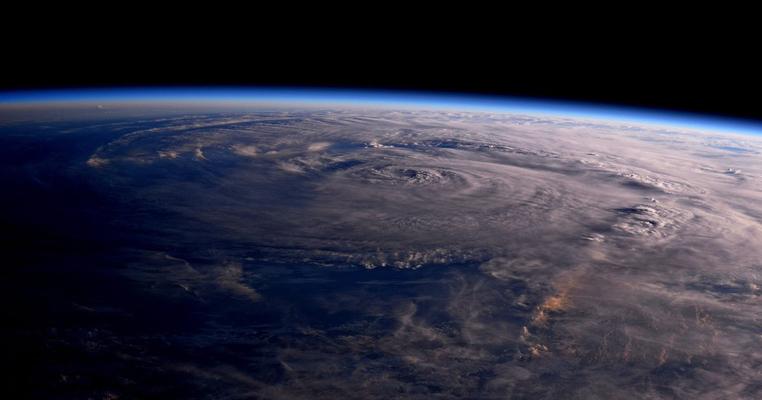
The Alliance for Climate Protection®: Hurricane Harvey and Climate Change: Here Are the Facts
A big thank you to NASA, NOAA, Climate Signals, and Years of Living Dangerously for providing the media and resources used for this blog.
Ultimately, this is why climate change is a human issue – because the way we’re altering our climate has a real impact on our health, our livelihoods, and our homes. This video from Years of Living Dangerously explains what Hurricane Harvey has to do with climate change and what this means for our future:
Climate Facts: Hurricane HarveyToday, our hearts are heavy and our thoughts are with everyone affected by Hurricane Harvey. As climate scientist Dr. Michael E. Mann wrote, “we can’t say that Hurricane Harvey was caused by climate change. But it was certainly worsened by it.” Ultimately, this is why climate change is a human issue – because the way we’re altering our climate has a real human impact. Watch this video from Years of Living Dangerously that explains what Hurricane Harvey has to do with climate change and what this means for our future.
Posted by Climate Reality on Monday, August 28, 2017
What Is a Hurricane Exactly?
Maybe you’ve heard the words “typhoon” and “hurricane” used interchangeably. Both are tropical cyclones in which the maximum sustained wind is 74 miles per hour or higher (119 kilometers per hour or higher). These tropical storms are called hurricanes when they occur in the Atlantic or the Northeast Pacific.
According to NASA:
“Tropical cyclones are like giant engines that use warm, moist air as fuel. That is why they form only over warm ocean waters near the equator. The warm, moist air over the ocean rises upward from near the surface. Because this air moves up and away from the surface, there is less air left near the surface. Another way to say the same thing is that the warm air rises, causing an area of lower air pressure below.
Air from surrounding areas with higher air pressure pushes in to the low pressure area. Then that ‘new’ air becomes warm and moist and rises, too. As the warm air continues to rise, the surrounding air swirls in to take its place. As the warmed, moist air rises and cools off, the water in the air forms clouds. The whole system of clouds and wind spins and grows, fed by the ocean's heat and water evaporating from the surface.”
>> Related: What’s the Difference Between a Hurricane and a Typhoon? <<
So, What Does Hurricane Harvey Have to Do with Climate Change?
Climate change intensifies the impact of hurricanes. Here’s how:
1. By adding fuel to the fire, climate change makes hurricanes more devastating. Average global sea surface temperatures are rising. As sea surface temperatures become warmer, hurricanes can become more powerful. In the case of the Category 4 Hurricane Harvey, this greater power comes from “sea surface temperatures in the Gulf of Mexico that are 2.7 - 7.2°F (1.5 - 4°C) above average, relative to a 1961-1990 baseline.”
2. Climate change is linked to extreme rainfall (and therefore, flooding). Global temperatures are rising. As the world becomes warmer, more water evaporates from bodies of water. Therefore, there’s more water vapor in the air. This gives hurricanes more precipitation, and can result in more flooding when the hurricane makes landfall. The Weather Channel said that Hurricane Harvey “may end up being one of the worst flood disasters in US history.” Some areas could see up to 50 inches of rain.
3. Sea-level rise caused by climate change can “dramatically extend the storm surge driven by hurricanes.” According to NOAA, a storm surge “is the abnormal rise in seawater level during a storm, measured as the height of the water above the normal predicted astronomical tide.” To put it another way, the storm surge is the ocean water pushed into the coast by the force of the hurricane. Global sea levels are rising. When sea levels are higher, storm surges intensify and can lead to more widespread and greater damage. The highest-reported storm surge from Harvey (in Port Lavaca, Texas) was 7 feet above the mean sea level.
#Harvey has rapidly intensified in the Gulf of Mexico, where waters are 2.7 - 7.2°F (1.5 - 4°C) above average https://t.co/FIuJgD2Hj3 pic.twitter.com/Bw1lzNa2qV
— Climate Signals (@ClimateSignals) August 25, 2017
What You Can Do
- First and foremost: Use this page to determine how you can help those affected by Hurricane Harvey right now.
- Get smart: Learn more about how climate change is affecting Texas.
- Get loud: Download our free e-book Twelve Questions Every Climate Activist Hears and What to Say to learn how to answer the most common questions your friends and family have about the climate crisis.
- Get active: Become a Climate Reality Leader. Join former US Vice President Al Gore and renowned climate scientists and communicators to learn about what’s happening to our planet and how you can use social media, powerful storytelling, and personal outreach to inspire people to take action.


